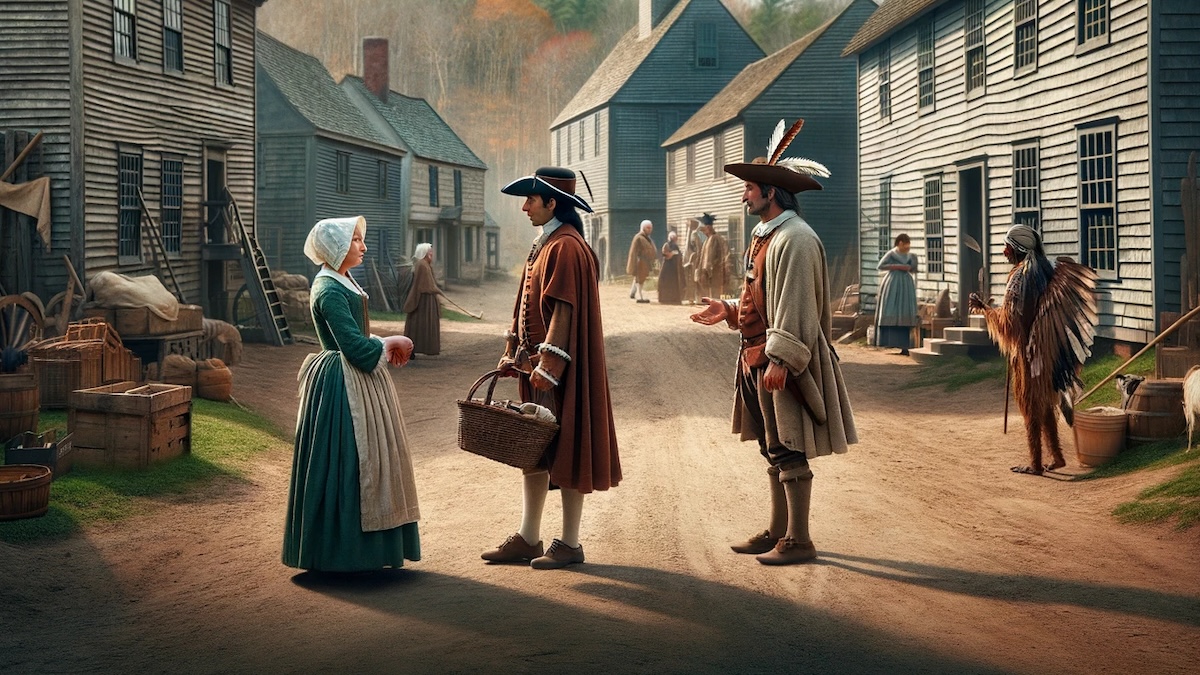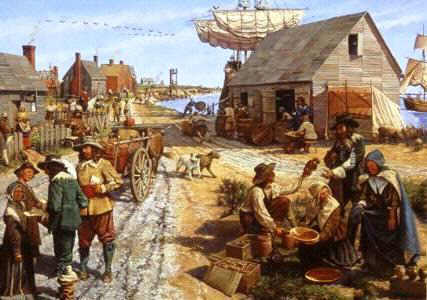
Reading the Land: Unveiling Native American Identity in Colonial-Era Maps
Maps are not mere geographical representations; they are potent instruments of power, narratives etched onto parchment that reflect the perspectives, ambitions, and ideologies of their creators. For Native American tribes during the Colonial era, European-made maps often told a story of impending subjugation, erasure, and a profound misunderstanding of their relationship with the land. Yet, within the lines and labels of these historical artifacts, and by understanding the indigenous cartographies they sought to overwrite, we can unearth a richer, more nuanced understanding of Native American identity, sovereignty, and resilience. This article delves into the complex world of Colonial-era maps, exploring how they were used, what they omitted, and how we can critically read them today to connect with the deep history and enduring identity of America’s first peoples.
The European Gaze: Cartography as a Tool of Empire
From the moment European explorers set foot on North American soil, maps became indispensable tools of conquest and claim. Spanish, French, Dutch, and English cartographers rapidly began to chart coastlines, rivers, and perceived territories, driven by a desire for resources, trade routes, and geopolitical dominance. These maps served several critical functions for the colonizers:

- Claiming Territory: Drawing a line on a map was often the first act of asserting sovereignty, regardless of indigenous occupancy. European monarchs used these maps to justify their claims to vast swathes of land, often based on vague "discoveries" or religious mandates.
- Facilitating Exploration and Exploitation: Maps guided expeditions, identified potential resource extraction sites (furs, timber, minerals), and charted navigable waterways. They were blueprints for economic expansion.
- Military Strategy and Control: As conflicts arose – both between European powers and with Native tribes – maps became crucial for planning campaigns, fortifying positions, and understanding the terrain for strategic advantage.
- Imposing Order and Naming: European maps systematically replaced indigenous place names with European ones, a subtle but powerful act of cultural subjugation. Rivers, mountains, and settlements were renamed to reflect colonial ownership and presence, effectively erasing millennia of indigenous nomenclature and history.

Early colonial maps, such as John Smith’s seminal 1612 map of Virginia, offered glimpses of Native American settlements and tribal names, like the Powhatan Confederacy. However, even these relatively sympathetic portrayals were filtered through a European lens. Native communities were often depicted as generic symbols (tipis or generic villages), their internal political structures and cultural nuances largely ignored. Boundaries between tribes were often drawn arbitrarily or based on limited European understanding, rather than reflecting the complex, fluid territorial understandings of indigenous peoples. The overarching message was one of European discovery and future dominion over a landscape ripe for settlement and exploitation.
Indigenous Cartographies: A Different Understanding of Land and Identity

To truly understand Native American identity in the context of Colonial-era maps, one must first grasp the stark contrast between European and indigenous conceptions of land and territory. For most Native American tribes, land was not a commodity to be bought, sold, or "owned" in the Western sense. Instead, it was a living entity, a sacred trust, and the foundation of their spiritual, cultural, and economic identity.
Indigenous "maps" were not typically static, two-dimensional paper documents. They were dynamic, multi-layered systems of knowledge embedded in:
- Oral Traditions: Stories, songs, and ceremonies meticulously detailed hunting grounds, sacred sites, resource locations, migration routes, and ancestral connections to specific places. These narratives served as living maps, passed down through generations, ensuring collective memory and territorial understanding.
- Physical Markers: Trails, cairns, petroglyphs, and natural landmarks (rivers, mountains, unique rock formations) served as navigational points and boundary markers, often imbued with spiritual significance.
- Wampum Belts: While primarily used for recording treaties and historical events, the intricate patterns and shell arrangements of wampum belts could also convey geographical information, alliances, and territorial agreements.
- Memory and Experience: Generations of living on the land, understanding its cycles, its flora and fauna, and its spiritual essence, constituted the most profound indigenous map. This embodied knowledge was far more detailed and nuanced than any European cartographic attempt.

Tribal boundaries, therefore, were often fluid and permeable, based on shared resource use, kinship networks, and seasonal movements rather than rigid lines. A specific hunting ground might be shared by multiple groups, or a river might serve as a temporary boundary that shifted with alliances or environmental changes. Identity was inextricably linked to place – a person was defined by their ancestral lands, their relationship to the natural world, and their connection to the spirits of that territory. The forced imposition of fixed, European-style boundaries directly assaulted this fundamental aspect of indigenous identity.
The Collision of Worlds: Maps, Treaties, and Dispossession
The Colonial era witnessed a relentless clash between these two profoundly different ways of seeing and mapping the world. European powers, armed with their cartographic tools, sought to define, divide, and ultimately conquer Native lands. This was most evident in the numerous treaties signed – and often broken – during this period.
Treaty Maps: European treaty commissioners often produced maps depicting the lands being ceded by Native tribes. These maps, however, were fraught with problems:
- Misunderstanding of Scale and Distance: Native negotiators, accustomed to describing territory in terms of natural landmarks and travel time, often did not grasp the precision of European survey lines or the vastness of the areas they were purportedly ceding on a paper map.
- Language Barriers and Manipulation: Translation issues and deliberate deception by European agents were common, leading to Native leaders unknowingly signing away far more land than they intended.
- Lack of Authority: European negotiators often treated with individual chiefs or small bands, assuming they had the authority to speak for entire nations or confederacies, which was frequently not the case. This led to disputes over legitimacy and further land loss.
- "Empty Land" Fallacy: Even when Native presence was acknowledged, European maps frequently depicted vast areas as "unoccupied" or "wilderness," reinforcing the notion of terra nullius (nobody’s land) ripe for settlement, despite these areas being vital hunting grounds, sacred sites, or seasonal territories for indigenous peoples.
The ultimate consequence of this cartographic and political collision was the systematic dispossession of Native American lands. Maps became instruments of forced removal, culminating in policies like the Indian Removal Act of 1830 and events like the Trail of Tears. The lines drawn on these maps dictated where tribes would be forcibly relocated, often to unfamiliar and less fertile lands, shattering communities and severing ancestral ties. The creation of reservations, while providing some measure of protected territory, was also a mapping exercise – confining tribes to fragmented parcels, often far removed from their traditional homelands, thereby redefining their identity in relation to a diminished and externally imposed landscape.
Reading Between the Lines: Deconstructing Colonial Maps Today
For modern travelers and history enthusiasts, Colonial-era maps offer a unique, albeit biased, window into the past. Approaching them critically allows us to glean valuable insights while acknowledging their inherent limitations and the violence they often represent:
- Identify the Creator and Purpose: Who made this map? What was their agenda? A map made by a land speculator will differ significantly from one made by a military commander or a missionary.
- Look for Native Place Names (or their Absence): Even when European names dominate, some indigenous place names might persist, offering clues to original tribal territories and language. The absence of such names speaks volumes about the colonial agenda of erasure.
- Observe Depictions of Native Peoples: Are they present? Are they labeled? How are they represented (as obstacles, allies, symbols, or generic figures)? This reveals European perceptions and biases.
- Analyze Boundaries and "Empty" Spaces: Note how European boundaries are drawn. What lands are marked as "claimed" or "settled" versus "unexplored" or "Indian Territory"? The latter often reveals the true extent of indigenous occupancy that the colonizers chose to ignore or diminish.
- Correlate with Indigenous Sources: The most crucial step is to cross-reference colonial maps with indigenous oral histories, cultural knowledge, and contemporary tribal mapping projects. This helps to fill in the gaps, correct inaccuracies, and understand the deeper, indigenous meaning of the land. Websites, tribal archives, and educational initiatives from organizations like the Native Land Digital project are invaluable resources.
By engaging with these maps critically, we move beyond seeing them as mere historical curiosities. We begin to understand them as documents of colonial ambition, instruments of dispossession, and, paradoxically, as faint echoes of an enduring indigenous presence that resisted erasure.
The Enduring Legacy: Reclaiming Land, Reasserting Identity
The legacy of Colonial-era mapping continues to shape Native American identity and sovereignty today. Modern tribal nations are engaged in crucial work to reclaim their ancestral lands, assert their self-determination, and revitalize their cultures and languages. This often involves:
- Legal Battles: Tribes frequently use historical maps, treaties, and oral traditions to argue for land rights, water rights, and treaty enforcement in courts.
- Cultural Preservation: Efforts to re-learn and use indigenous place names, understand traditional ecological knowledge, and connect with sacred sites are powerful acts of cultural revitalization and identity affirmation.
- Contemporary Indigenous Cartography: Native scholars and communities are creating their own maps – digital and physical – that reflect indigenous perspectives, traditional ecological knowledge, and modern tribal territories, providing counter-narratives to colonial maps. These maps emphasize stewardship, cultural significance, and self-determination.
- Educational Initiatives: Sharing these histories and diverse perspectives is vital for fostering a more accurate and respectful understanding of America’s past and present.
For the traveler, this journey of understanding offers a profound opportunity. Visiting sites of historical significance, engaging with tribal cultural centers, and supporting indigenous-led tourism initiatives can transform a simple trip into an educational pilgrimage. It means looking at the landscape not just as a scenic backdrop, but as a living tapestry woven with millennia of indigenous history, identity, and resilience. It means recognizing that every river, mountain, and valley holds stories, names, and spiritual significance that often predate colonial mapping by thousands of years.
Conclusion
Colonial-era maps are stark reminders of a tumultuous period when European powers sought to redefine and control North America. While they represent a narrative of conquest and dispossession, they also inadvertently point to the enduring presence and profound connection Native American tribes had, and continue to have, with their ancestral lands. By learning to read these maps critically, understanding the indigenous cartographies they sought to silence, and seeking out Native voices, we embark on a journey of deeper historical understanding and empathy. It is a journey that acknowledges the past, honors indigenous identity, and recognizes the ongoing struggles and triumphs of America’s first peoples in shaping their own narratives and futures. The lines on a map may seem static, but the stories they tell, and the identities they represent, are vibrantly alive and constantly evolving.
